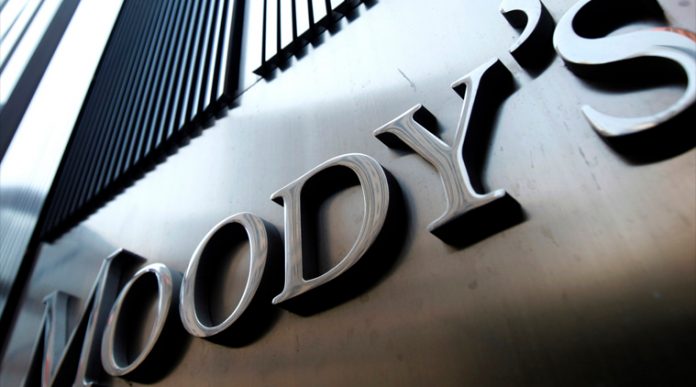Limmasol: Moody’s Investors Service on Monday affirmed Habib Bank Ltd. (HBL)’s B3/Not-Prime local currency deposit ratings and its Caa1/Not-Prime foreign currency deposit ratings. At the same time, Moody’s downgraded the bank’s baseline credit assessment (BCA) and adjusted BCA to caa1 from b3 and the bank’s long-term Counterparty Risk Assessment (CR Assessment) to B3(cr) from B2(cr). The outlook remains stable.
The decision to downgrade HBL’s BCA reflects the weakening in the bank’s capital buffers and concerns regarding the bank’s risk management and governance framework following the $225 million fine imposed on the bank’s New York branch by the New York Department of Financial Services (DFS).
The decision to affirm HBL’s long-term local currency deposit rating reflects Moody’s assessment of a ‘very high’ probability of government support from Pakistan (B3 stable) in case of need, which now results in one notch of uplift from the bank’s caa1 standalone BCA.
DOWNGRADE OF THE STANDALONE BCA TO caa1 FROM b3
This rating action follows the announcement that the New York DFS has fined HBL $225 million for failure to comply with New York laws and regulations governing money laundering, terrorism financing and other prohibited financial transactions. According to the authorities, HBL — which has been under scrutiny since 2006 — did not take remedial actions to address these deficiencies, pointing to risk management and governance weaknesses.
The fine will have a material impact on the bank’s capital and profitability, equivalent to 12% of the bank’s June 2017 equity and 68% of its full-year 2016 earnings. The $225 million fine lowers HBL’s reported Tier 1 ratio by an estimated 200 basis points, with the bank’s June 2017 equity-to-assets ratio declining to 6.5% (from a reported value of 7.4%). Moody’s estimates that the bank’s return on assets will decline to 0.3% for 2017 (H1 2017: 1.2%). At these levels, the bank’s capitalisation and profitability metrics compare unfavorably with similarly-rated peers.
HBL has also decided to surrender its license and to conduct an orderly wind down of its New York branch. Going forward, Moody’s will also be monitoring the impact of the fine on the bank’s business operations and corresponding banking relationships, although there has been no impact so far according to the bank’s management.
The bank’s standalone credit profile also reflects the bank’s high exposure to the Government of Pakistan through holdings of government securities and government-related loans (exceeding 7x the bank’s equity as of June 2017), which links the bank’s creditworthiness to that of the government. In light of these high exposures, we consider the bank’s capital levels — with its Moody’s-adjusted 2016 Common Equity Tier 1 (CET1) ratio at 6.1% — to be modest. The bank maintains, however, a stable deposit-based funding profile and good earnings-generating capacity, supported by its dominant domestic franchise as Pakistan’s largest commercial bank, while Pakistan’s sustained progress on structural reforms should also stimulate lending growth going forward.
AFFIRMATION OF THE DEPOSIT RATINGS
Moody’s notes that despite the downgrade of the bank’s BCA to caa1, HBL’s local-currency deposit rating has been affirmed at B3, as it now incorporates one notch of uplift from government support. Moody’s ‘very high’ support assumption reflects the bank’s systemic importance, with a 14% market share of domestic deposits, as well as the support that the bank itself provides to the sovereign through its large government securities holdings. In response to the recent developments, the Pakistani authorities have also reiterated their commitment to safeguard the interest of depositors and to ensure the soundness of the banking system.
DOWNGRADE OF THE LONG-TERM CR ASSESSMENT
The bank’s long-term CR Assessment has been downgraded to B3(cr) from B2(cr), reflecting the downgrade of the bank’s baseline credit assessment. HBL’s CR Assessment is positioned one notch higher than its caa1 Adjusted BCA, as Moody’s expects that authorities are likely to honour the operating obligations the CR Assessment refers to in order to preserve a bank’s critical functions and reduce potential for contagion. No government support uplift is imputed, however, as the government’s capacity to provide support is constrained at the B3 sovereign rating level.
WHAT COULD MOVE THE RATINGS UP/DOWN
Upward pressure on the bank’s ratings could arise from improvements in Pakistan’s operating environment and in the government’s credit risk profile. A material strengthening in the bank’s capital buffers and profitability could result in an upgrade of the bank’s standalone credit assessment.
HBL’s ratings could come under downward pressure if asset-quality deterioration materially affects the bank’s profitability and weakens further its capital buffers. A weakening in the government’s creditworthiness would also have negative rating implications.




